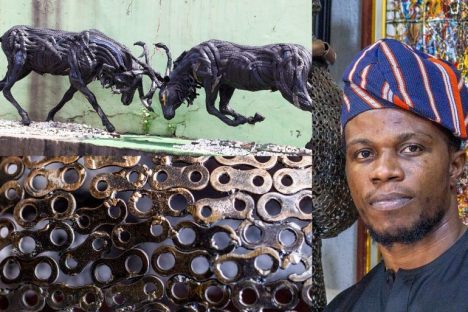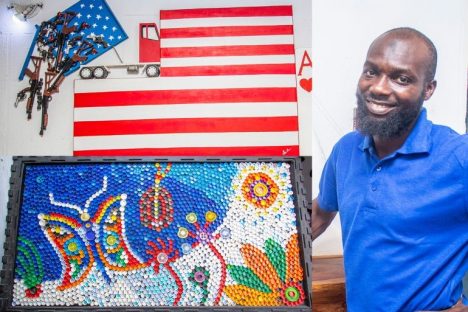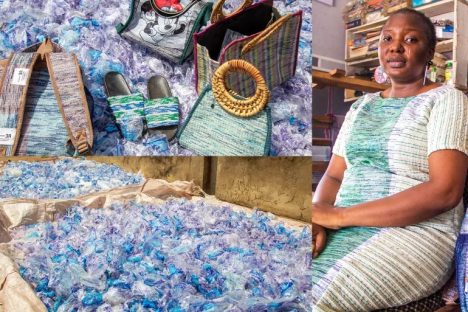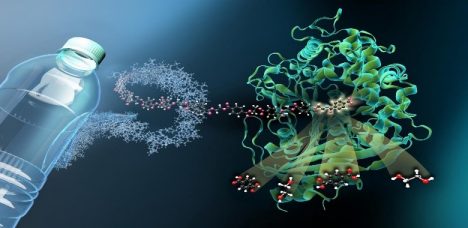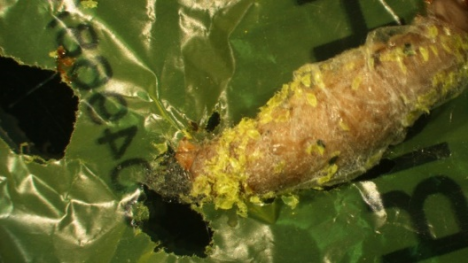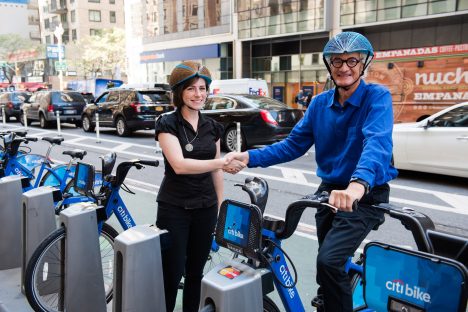Youth Awareness
- 26 Jun, 23
- by Admin
- in Youth Awareness
-
 0
0
-

 0
0
Surrounded by art pieces in his gallery in Dugbe at the heart of Ibadan, Ade Dagunduro, 34, takes us through his creative journey. A graduate of Fine Art from Obafemi Awolowo University, Ile-Ife, his desire to push the boundaries of what he learned within the walls of a university spurred him to take up more training in painting and sculpture.
“School was more theoretical, less practical. When you get out of school and into the real world, you realise there is much more to learn,” he says.
Art has “changed his life”, he adds, and, now, he can help improve life a little for others by taking waste from the streets to make art.
Originally working with regular art materials such as paint, clay and wood, five years ago, Dagunduro decided to challenge himself by thinking beyond those.
“I wanted to see if I could actually think outside the box. I asked myself if I could be more creative,” he says. In his quest to do this, Dagunduro learned to manipulate waste materials like used tyres, which would otherwise be burned – a common cause of pollution in Nigeria.
His first work with waste in 2016 was an ox made out of a tyre, called The Challenge. These days, he also works with metal, ropes and plastic which he finds on the streets in his community. Sometimes, people bring materials to his studio.
SOURCE: AL JAZEERA
- 23 Jun, 23
- by Admin
- in Youth Awareness
-
 0
0
-

 0
0
Ibrahim Gbadamosi, 41, uses waste to make items of furniture and artworks, such as ‘About Time’, a piece made from discarded wood, metal and plastic which depicts a truck on the US flag, dumping weapons.
In 2019, while he was selling some of his artwork on the roadside around Ringroad, Ibadan, a lecturer at the University of Ibadan showed interest in Ibrahim Gbadamosi’s craft.
She invited him to present his work at the biannual conference of the Institute of Peace and Strategic Studies, being held at the university. But, when the lecturer who invited him stepped out of the venue, he was sent away by another lecturer, who threatened to call security.
Gbadamosi, 41, says his art, which is made from all sorts of different kinds of waste, often gets a mixed reception. Some love it; others hate it.
“You will find people who will close doors in your faces, and you will find people who will open doors to you.”
In his house, which doubles as a gallery, visitors will find a sailing ship made from a tree trunk; a map of Africa made from bottle tops and foam slippers; a beaded curtain made out of strings of bottle caps.
SOURCE: AL JAZEERA
- 15 May, 23
- by Admin
- in Youth Awareness
-
 0
0
-

 0
0
Adejoke Lasisi turns discarded sachets of drinking water into art by using them to weave attractive items including clothes, slippers, bags and mats. Nylon water sachets are a major pollutant where she lives in Ibadan, frequently found clogging up drains and littering the streets. Adejoke Lasisi, who is in her early 30s, is from a traditional, middle-class weaving family in Ibadan. Aged nine, she started weaving the popular aso-òfì, a material made from cotton threads, traditionally woven by Yorùbá people.
Now, she has turned her craft into a way to relieve her home city of some of its waste burden. In Nigeria, discarded “pure water” sachets – small, rectangular sachets of drinking water made from nylon – are a common sight on roads and in gutters. “I began to pick them up,” she says. “I also began to think of what I could do with them
“People were always complaining about the pure water nylon sachets everywhere. I worked out that it would be great to make these nylon sachets into colourful clothing.”
She has now perfected the art of blending weaving wool with nylon. Doing this involves a five-step process before the sachets are transformed into attractive products such as bags, purses, slippers, mats, artwork and more.
First, Lasisi sources the nylon – picking up sachets from the streets and receiving discarded, imperfect sachets from water processing plants. She says the nylon used to make pure water sachets has two advantages: It is the right texture for weaving and is largely a neutral colour, meaning it is easy to dye.
“After sorting, we wash the material thoroughly and disinfect it, after which we dry it in the sun. The whole process takes three days. Once dried, we shred the material with scissors into thread-like strands. Then, we can begin to weave them on the loom.”
One of her most popular products is a school bag which is made from 10 percent òfì and 90 percent nylon and recycles 250 water sachets in the process.
Since Lasisi started Planet3R, her for-profit business, in 2020, she has also partnered with different organisations and won several grants in Nigeria and overseas to train young people in the art.
“I hope that other young people will be able to save the environment with their hands too. The more wastepreneurs we have, the cleaner our environment becomes.”
SOURCE: AL JAZEERA
- 18 May, 20
- by Admin
- in Youth Awareness
-
 0
0
-

 0
0
1.3 billion plastic bottles are sold daily around the world. And that’s just the tip of the fossil-based plastic iceberg. Plastic preserves our food. It’s in the nylon and polyester we wear, and it protects medical staff from the coronavirus.
Petroleum based plastics dominate the market because they’re durable, light-weight and cheap, but most of them can’t be recycled or reused.
Of the 6.3 billion tons of plastic waste produced between 1950 and 2015, only 9% were recycled The rest of it ended up in landfills, was incinerated or, all too often, landed in the ocean .
A raft of new bioplastic innovations is starting to catch up, though. And, unlike unsustainable fossil fuels, they are derived from renewable sources.
While bioplastics have the same molecular structure as petroleum-based plastics, which take hundreds of years to decompose, research shows that biomass-based polymers are also more likely to biodegrade and break down, including in industrial compost facilities. Bioplastic proponents believe they are key to making plastic part of a circular economy.
Here’s a look at five ingredients that could make bioplastics competitive with traditional plastics.
1. Olive Pits
Countries that produce a lot of olive oil have a byproduct that can be used for plastic: olive pits. A Turkish startup called Biolive began creating a range of began creating a range of bioplastic granules created from olive seeds that result in bio-based, partially biodegradable products that can decompose in a year.
The active ingredient oleuropein found in olive seeds is an antioxidant that extends the life of the bioplastic while also hastening composting of the material into fertilizer within a year.
And since Biolive’s granules act like fossil fuel-based plastics, plastic producers can simply substitute the conventional granules without disrupting the production cycle for industrial products and food packaging.
Biolive claims that by utilizing olive oil waste, production costs are reduced by up to 90% in relation to some existing bioplastics. This is important says founder Duygu Yilmaz, since starch-based bioplastics made from corn are often more expensive than petroleum-based plastics are therefore not a viable alternative.
In 2019, award-winning Biolive was chosen to represent Turkey at the United Nations Development Programme.
2. Sunflower Hulls
Like olive seeds, the husks of sunflower seeds used for oil production is a waste product also being used to created bioplastics. And luckily, they’re in near endless supply.
The German start-up Golden Compound has created a unique Sustainable Sunflower Plastic Compound bioplastic – referred to as S²PC. It’s reinforced with sunflower hulls, which they claim are 100% recyclable.
The S²PC bioplastic is being moulded into everything from office furniture to recyclable transport and storage boxes and crates.
Golden Compound also produces a “green” bioplastic that is 100% biodegradable, GMO-free and can be fully composted at home. Products include award-winning, world-first biodegradable coffee capsules, plant pots and coffee mugs.
The German start-up attributes the success of its bioplastics to performance. “In the end, the only reason people will be willing to switch, is if it works,” Marcel Dartée, General Manager at Golden Compound, told the Plastic Today trade publication.
3. Fish Waste and Algae
The growing attempt to transform organic waste into plastic now includes fish processing refuse.
A UK initiative called MarinaTex is using fish skin and scales – 500,000 tons of which are generated annually in the UK alone – bound with red algae to make a compostable plastic alternative that can replace single-use plastics such as bakery bags and sandwich packs.
MarinaTex claims the biopolymer creates stronger packaging than a conventional plastic bag — flying in the face of perceptions that bioplastics lack strength and durability.
Lucy Hughes, who created the product in her final year at the University of Sussex, says MarinaTex’s flexibility, strength and pliability was inspired by actual fish skin and scales.
“It kind of struck me that nature can make so much from so little, so why do we need to have hundreds of man-made polymers when nature has so many already available,” she told the World Economic Forum in November.
MarinaTex, which won the 2019 James Dyson Award worth €35,000, describes its product as home compostable and says it can break down within four to six weeks.
4. Plant Sugars
While PET is one of the most recyclable fossil-based plastics it takes hundreds of years to decompose. In response, Amsterdam-based Avantium has created a revolutionary “YXY” plants-to-plastics technology that converts plant-based sugars into a new biodegradable packaging material, polyethylene furanoate or PEF.
A trial of PEF biodegradability in the natural environment is showing promising signs.
“PEF degrades much faster than PET under industrial composting conditions,” Caroline van Reedt Dortland, Director Communications at Avantium, told DW. Degrading in 250-400 days as opposed to 300-500 years is significant.
It is used as a textile, film, and has the potential to become a major player in the packaging of soft drinks, water, alcoholic beverages and fruit juices, having already collaborated with the likes of Carlsberg to create a “100% bio-based” beer bottle.
According to Hasso Pogrell of European Bioplastics, it’s even possible to ” recycle PEF together with PET, and it makes the PET recyclate perform even better than the original PET.”
5. Mushrooms
Gadget blog Gizmodo wrote back in 2015 about resilient and biodegradable fungal mycelia-based materials which, unlike oil-based plastic, “create no toxic byproducts.”
One emerging brand utilizing fungi is Reishi, a sustainable, fine mycelium leather substitute created from a woven cellular microstructure derived from mushrooms. By emulating the collagen structure of animal leathers, Reishi fine mycelium is both sustainable and versatile.
Reishi creator MycoWorks has taken the water-resistant biomaterial to the next level, promising the performance, quality and aesthetics of leather or synthetic plastic materials, but with a negative carbon footprint.
Already utilized by a selection of European luxury and footwear brands, in late 2019 $17 million (€18 million) financing was raised to help deliver commercially viable non-plastic, non-animal Reishi materials to the market.
In terms of limiting fossil-based plastic consumption, the biomaterial aims to outperform existing “vegan leathers” that are created with unsustainable plastics.
- 06 Apr, 20
- by Admin
- in Uncategorized, Youth Awareness
-
 0
0
-

 0
0
German researchers have identified a strain of bacterium that not only breaks down toxic plastic, but also uses it as food to fuel the process, according to The Guardian

The scientists discovered the strain of bacteria, known as pseudomonas bacteria, at a dump site loaded with plastic waste , where they noticed that it was attacking polyurethane. Polyurethane’s are ubiquitous in plastic products because they are pliable and durable. However, when they reach the end of their usefulness and end up in landfills, they decompose slowly and slowly release toxic chemicals into the soil as they degrade. They are also notoriously difficult to recycle, according to Courthouse News.
Since it is so difficult to recycle, millions and millions of products containing polyurethane like sneakers, diapers, kitchen sponges and foam installation end up in landfills. Polyurethane usually kills most bacteria too, so it surprised the researchers to find a strain that not only survived, but also used polyurethane to thrive, according to The Guardian. The findings were published in the journal Frontiers in Microbiology.
“The bacteria can use these compounds as a sole source of carbon, nitrogen and energy,” Hermann J. Heipieper, a senior scientist at the Helmholtz Centre for Environmental Research-UFZ in Leipzig, Germany and co-author of the new paper, said in a statement. “These findings represent an important step in being able to reuse hard-to-recycle polyurethane products.”
Pseudomonas bacteria are part of a family of microorganisms known for its ability to withstand harsh conditions, such as high temperatures and acidic environments.
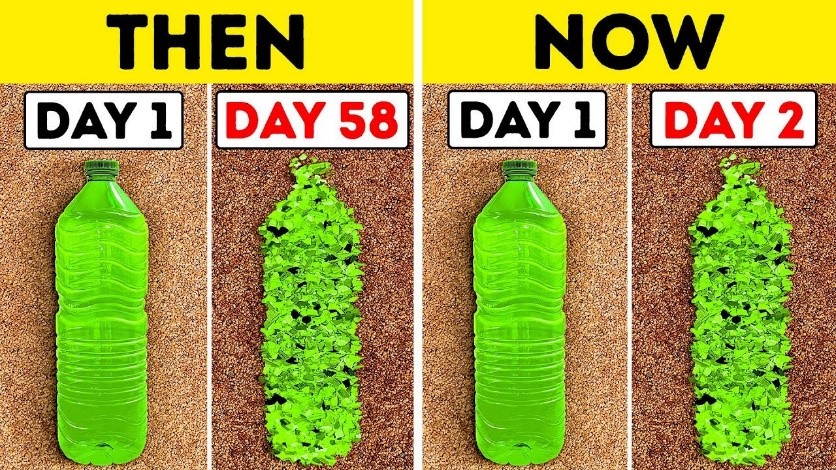
While the little germs offer hope for a solution to the plastic crisis polluting land and water around the globe, scientists are still a long way away from being able to use the bacteria on a large scale. Heipieper estimated that it could be 10 years before the bacteria are ready to consume plastic at a large scale. He added that in the meantime, it is important to reduce the use of non-recyclable plastic and to cut the amount of plastic used around the world, according to The Guardian.
Our reliance on plastic has created a waste crisis. In 2015, polyurethane products alone accounted for 3.5 million tons of the plastics produced in Europe, according to a press release from the journal that published the study. More than 8 billion metric tons of plastic has been produced since the 1950s, according to The Guardian, and a vast majority of it has polluted the world’s land and oceans, or ends up in landfills. Scientists say it threatens a “near permanent contamination of the natural environment.”
As for polyurethane, its heat resistance make it a difficult and energy intensive to melt down. Because of that, it is disproportionately tossed into landfills around the world where its slow degradation releases toxic — and often carcinogenic — chemicals, according to Courthouse News.
In the laboratory, the researchers fed key components of polyurethane to the bugs. “We found the bacteria can use these compounds as a sole source of carbon, nitrogen and energy,” Heipieper said, as The Guardian reported.

“When you have huge amounts of plastic in the environment, that means there is a lot of carbon and there will be evolution to use this as food,” Heipieper said as The Guardian reported.
“Bacteria are there in huge numbers and their evolution is very fast. However, this certainly doesn’t mean that the work of microbiologists can lead to a complete solution,” he added. “The main message should be to avoid plastic being released into the environment in the first place.”
- 06 Apr, 20
- by Admin
- in Uncategorized, Youth Awareness
-
 0
0
-

 0
0
Scientists are learning more about a caterpillar that is very hungry for plastics!
The plastic-munching abilities of the greater wax moth caterpillar were first discovered in 2017 when a scientist and amateur beekeeper put some of the insects, who also eat beeswax, into a plastic bag only to discover that they had eaten their way out. Now, researchers at the University of Brandon have discovered that the larval greater wax moths can survive solely on polyethylene — the type of plastic that makes grocery shopping bags.
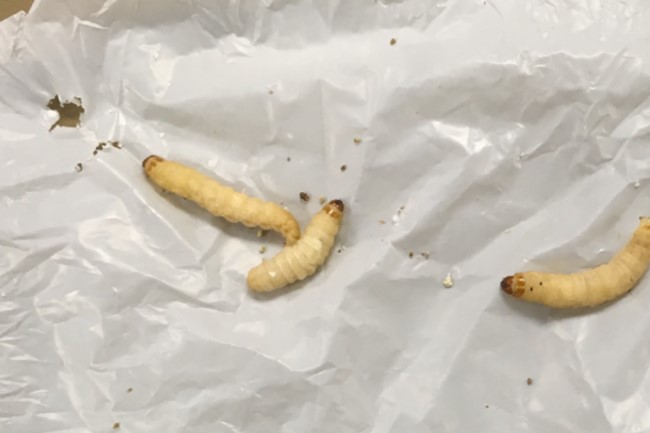
“They are voracious feeders during these larval stages,” lead study author and Brandon University associate biology professor Bryan Cassone told USA today
- 05 Dec, 18
- by Admin
- in BYOB Campaign, Climate Change, Ocean Conservation, Youth Awareness
-
 0
0
-

 0
0
Plastics have much to offer as a modern convenience, but lack of responsible plastic waste management habits can lead to potentially harmful environmental effects. Past environmental initiatives revealed a lack of understanding about youth attitudes towards pro‐environmental issues. Plastic, an online public environmental promotional campaign, encouraged youth to recognize the importance of, adopt positive attitudes towards and subsequently adopt the practice of responsible plastic management. We propose the Temporal Incentives Model of Social Influence to guide social campaign design. A pre‐post quantitative research design showed that the pre‐contemplation, contemplation and preparation stages progressed significantly after the campaign. The findings suggest that stimuli incorporating specialized information and small action steps allow migration to successive stages. With the strong presence of internet culture among youth, the online medium was found effective in altering the attitudes of the campaign target audience, while exposure to the campaign messages proved useful in encouraging environmental learning among youth.
- 21 Nov, 16
- by Admin
- in BYOB Campaign, Youth Awareness
-
 0
0
-

 0
0
A recyclable, folding cycling helmet made of paper has won this year’s prestigious international James Dyson Award.
Isis Shiffer, a recent graduate of the Pratt Institute of Design in New York, made the EcoHelmet from layers of recycled paper woven into a honeycomb-shaped structure. More…
